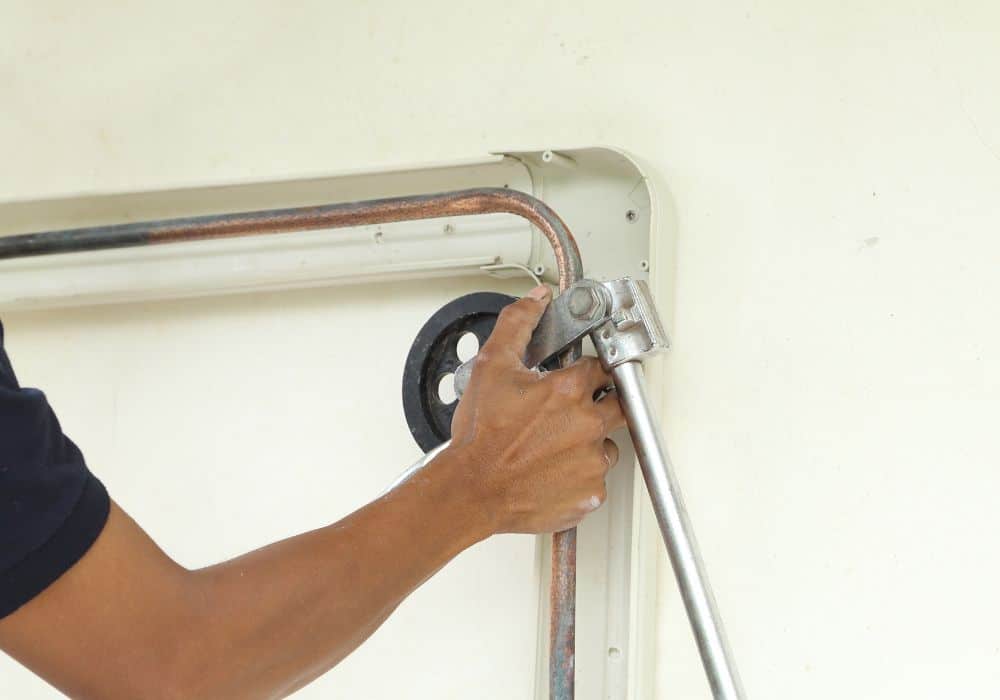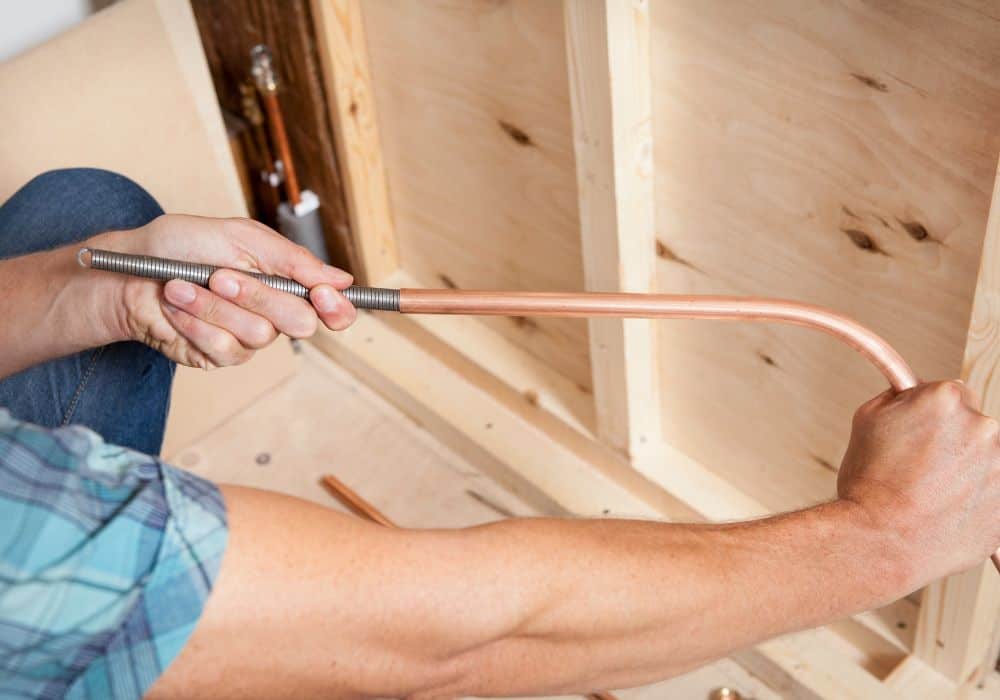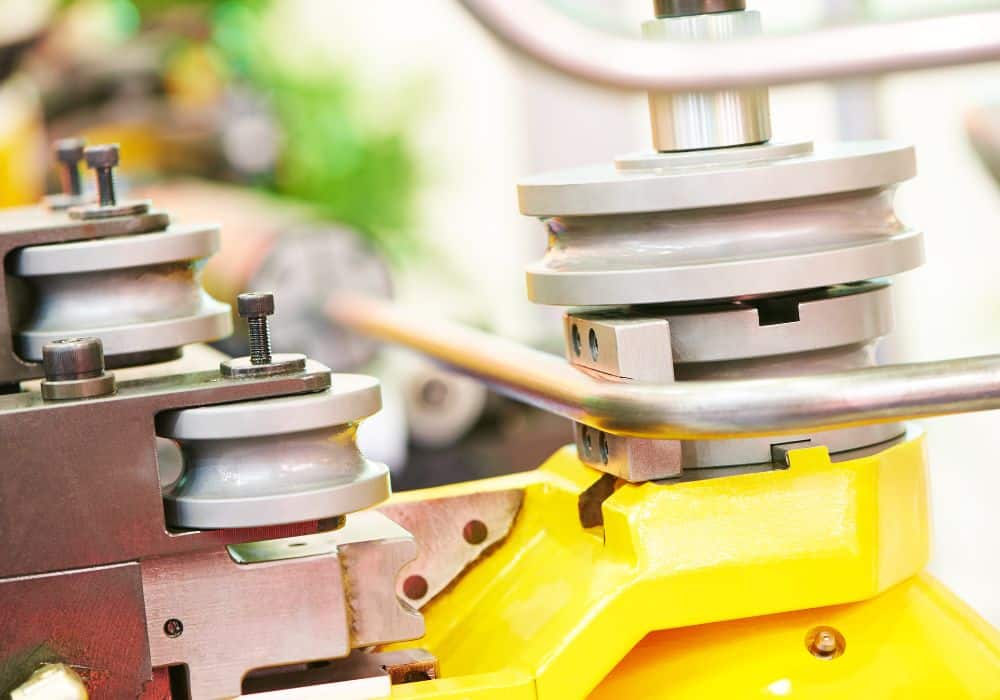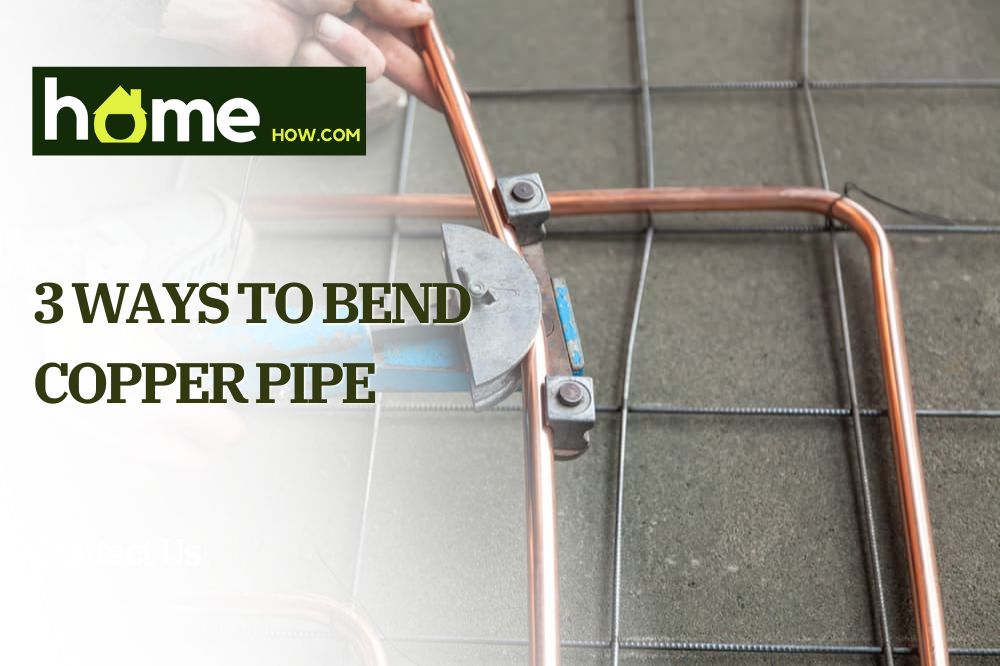Are you working on a decorative project that requires a neatly bent copper pipe for the right appeal? Or are you using copper pipes for plumbing work in your home?
Bending copper pipe works well for both visual appeal and practical plumbing applications, but you must use a suitable method and provide proper support to achieve the desired bend.
Keep reading as we explain everything you need to know about bending copper pipe safely, neatly, and efficiently, regardless of your intended application.
Useful Tools to Bend Copper Pipe
A blow torch is your best friend for bending copper pipe. While there are some methods that work without the use of one, most benefit from heat and it makes it much easier to get the bends you need without issue.
You need something like an oxy-acetylene torch, which runs hotter and is usually safer than a propane torch. It’s more expensive, but works well at getting copper pipes red-hot and ready to bend.
Other general plumbing tools and materials to have on hand include:
- Pipe cutters (or an appropriate saw)
- A bucket of cold water
- Extra copper pipe
- Safety materials (i.e. goggles and gloves)

You may want to try a few different methods for bending copper pipe, so make sure you have everything you need at hand.
Safety Precautions When Bending Copper Pipe
We recommend using protective gloves and safety glasses when bending copper pipe.
Safety goggles should be rated to at least shade 4 to protect your eyes from the bright flame from an acetylene flame. Even if you aren’t using heat, the goggles protect your eyes from potential shrapnel depending on your bending method.
Gloves provide the best protection when using heat, but they also work to protect your hands if manually bending.
If using heat, make sure there are no flammable objects nearby. Make sure you have a bucket of cold water at hand for cooling your copper pipe or dealing with errant flames. A fire extinguisher is a great backup plan.
Tips Before You Start
- Make sure you provide proper support for the sides of the pipe throughout the length of the bend, either inside or outside of the pipe. Proper support is what helps the copper retain its shape, preventing it from collapsing inward or warping.
- Work slowly to prevent crimps or ripples. It also allows you to make slight changes as needed if an issue starts to rear up.
- Understand the cost of bending copper pipe before you get started. Because the material is so expensive, you may not be able to afford a short training session to get what you want. Plan for the future.
Methods to Bend Copper Pipe
There are plenty of methods and tools for bending copper pipe, including:
- Dry sand and funnel method
- A pipe spring
- Pipe bending tools
Regardless of which method you choose, give yourself enough time and materials to practice beforehand. While bending copper pipe seems easy, it’s quite difficult to get the bend where you want it and at the angle you desire.
If possible, try a few different methods to see what works best for you.
1. Dry Sand + Funnel
Packing fine dry sand inside of your copper pipe provides the support you need to keep it from collapsing. This distributes any bending force you apply, but you must make sure it’s densely packed (no air pockets) and free of moisture.
Block the bottom of the copper pipe with duct tape or electrical tape to prevent the sand from escaping, then use a funnel to fill it. Stop periodically to tap the pipe with a rod or bounce it on a hard surface to pack the sand.
When it’s completely full, block off the other side to prevent sand from escaping.
You might bend smaller more malleable pipes with force alone, but heat eases the process. Bend it to the desired curve, then allow it to cool in a bucket of cold water (if heated).
While sand isn’t costly (you can even use beach sand or salt), it’s time consuming and tedious. It’s also difficult to get the correct angle with this manual bending process.
2. Pipe Bending Springs

Pipe bending springs come in a variety of sizes to suit copper pipes of different diameters (usually ¼ inch to ⅝ inch). They fit around the copper pip and provide the support needed to make the bend, and the springs work well for bends up to 180 degrees.
You can purchase a tube spring kit or a single pipe bending spring to suit your needs. They’re fairly inexpensive and easy to transport, but they’re also difficult to use neatly.
Mark your bend on your copper pipe, starting with the outermost point of the bend. Make sure you clean the pipe prior to bending, paying close attention to any burrs from cutting.
Springs may fit inside or outside of the copper pipe. For those that fit inside, make sure you can retrieve them easily after bending. If it’s shorter than your pipe length, attach wire to the spring to prevent loss.
Pipe bending works easiest if you heat the copper until it glows red, but smaller pipes may bend without it. Use gloves either way, and work slowly as you bend. Remove the spring when you are done and evaluate your work.
3. Pipe Benders
Pipe bending tools are arguably the easiest method for bending copper pipes, but they’re more of an investment than other methods. They also work to a set radius that may not work for your project.
For those willing to invest, pipe benders offer greater accuracy and relieve you of a dependency on heat.
To use one:
- Open the bender so you can insert the pipe in a straight line
- Determine the angle of the bend
- Pull the handles together until the angle forms
- Remove the pipe
The Chartered Institute of Plumbing and Heating Engineering (CIPHE) recommends you follow McKeown’s table for efficient transmission through copper pipes. A pipe bender is the best tool to reach these angles accurately.
| 90° | 60° | 45° | 30° | |
| 15mm | 70mm | 46mm | 35mm | 23mm |
| 22mm | 100mm | 66mm | 50mm | 33mm |
To use the chart, determine your copper pipe size and your angle. Measure back the dictated amount from the body of the table, then mark it with an arrow. Align the arrow with the edge of the pipe bender’s former, then bend as usual.
Why Bend Copper Pipe?
Bending copper pipe may seem unnecessary, but it’s often preferred for:
- Aesthetic appeal
- Even flow of material
- Fewer fittings and less room for error
This assumes success in copper bending, but it’s often worth the risk.

1. Aesthetics
Aesthetic appeal isn’t an end-all reason for certain methods, but it makes a lot of sense with copper pipe. Exposed copper pipes are beautiful, and if you can capitalize on that by bending rather than throwing in a mess of fittings–why not?
Bending copper keeps things neat and feeds certain design choices. This is especially important when using copper pipe for design over function.
2. Even Flow
Keeping the flow of materials even is a more practical reason for bending copper. Other pipe materials, such as PVC, require fittings that force material to change direction quickly.
In these instances, the material must hit the side then bounce off to move down the pipe. While it doesn’t happen often, it can cause air bubbles with the potential to lock up and damage the system.
Bend copper pipe allows material to flow freely through its length.
3. Fewer Fittings
Pipes are more likely to fail at joints and fittings. While proper installation plays a major role in this, you eliminate the risk by avoiding fittings when possible.
Reducing the number of fittings used also affects the budget. This isn’t a big deal on a small scale, but those who install copper pipe regularly will see the savings stack up.
Often, investing in the oxy-acetylene torch and a few pipe bending tools is well worth the reduction in fitting purchases.
The Importance of Using the Right Method to Bend Copper Pipe

Make sure you choose a method that:
- Allows you to get the right angle for your bend
- Provides proper support for the copper pipe
- You are comfortable performing
Bending copper pipe requires patience and dedication for clean results. Kinks, creases, and wrinkles in your bend reduce the diameter of your pipe and interfere with the flow of materials.
While forgivable in artsy applications, crinkled or pleated copper pipe used for plumbing is more likely to break due to the irregular pressure. Perfection, as well as practice, pays off in the end.
Conclusion
While there are several ways to bend copper pipe easily, patience and perseverance are essential to achieve a neat and efficient bend. Remember to:
- Gather all necessary materials before you start
- Provide sufficient support for the walls of the pipe
- Work slowly
Keep extra copper pipe on hand in case something goes wrong with your bend, and comment with any questions or concerns you have with copper pipe bending.
